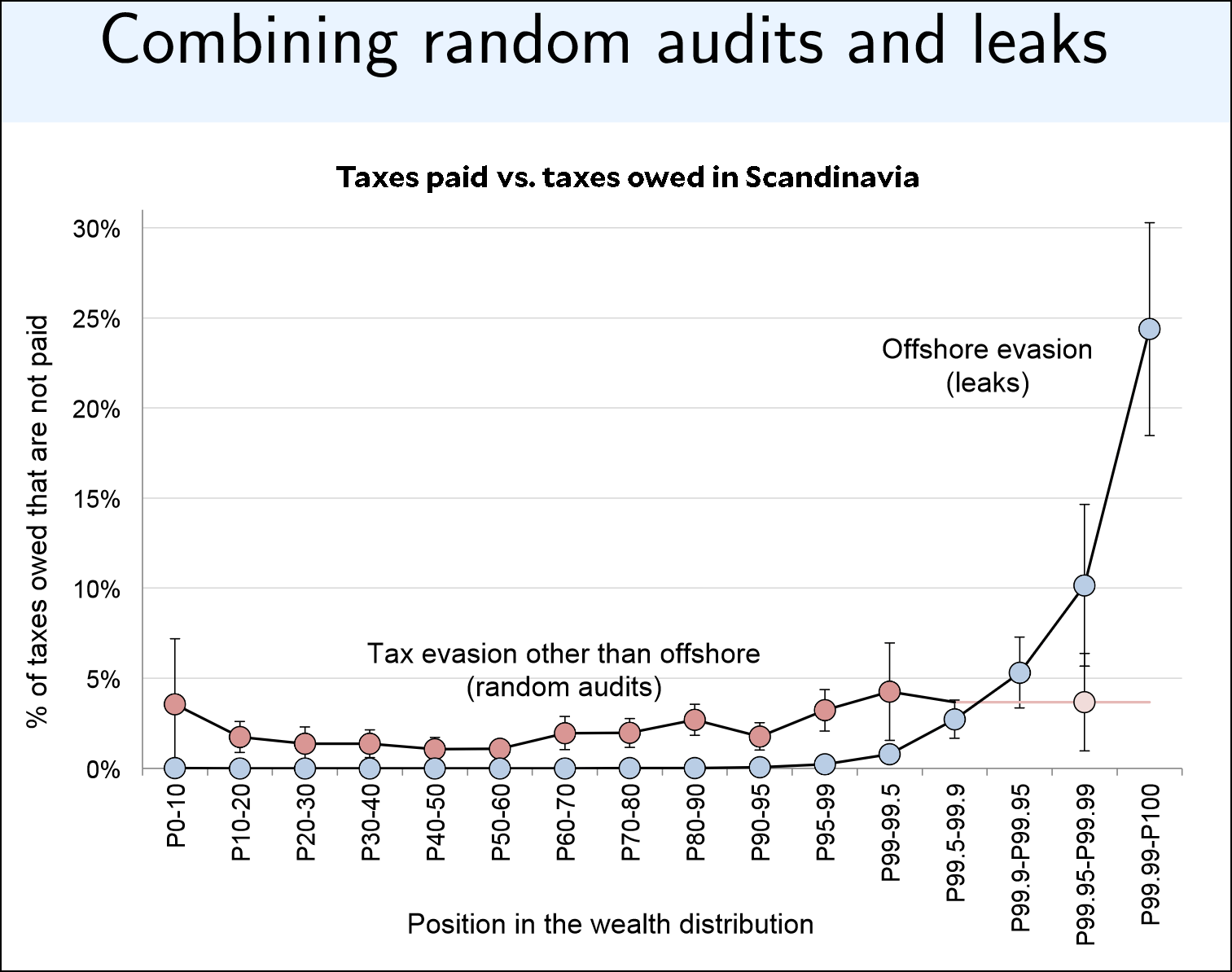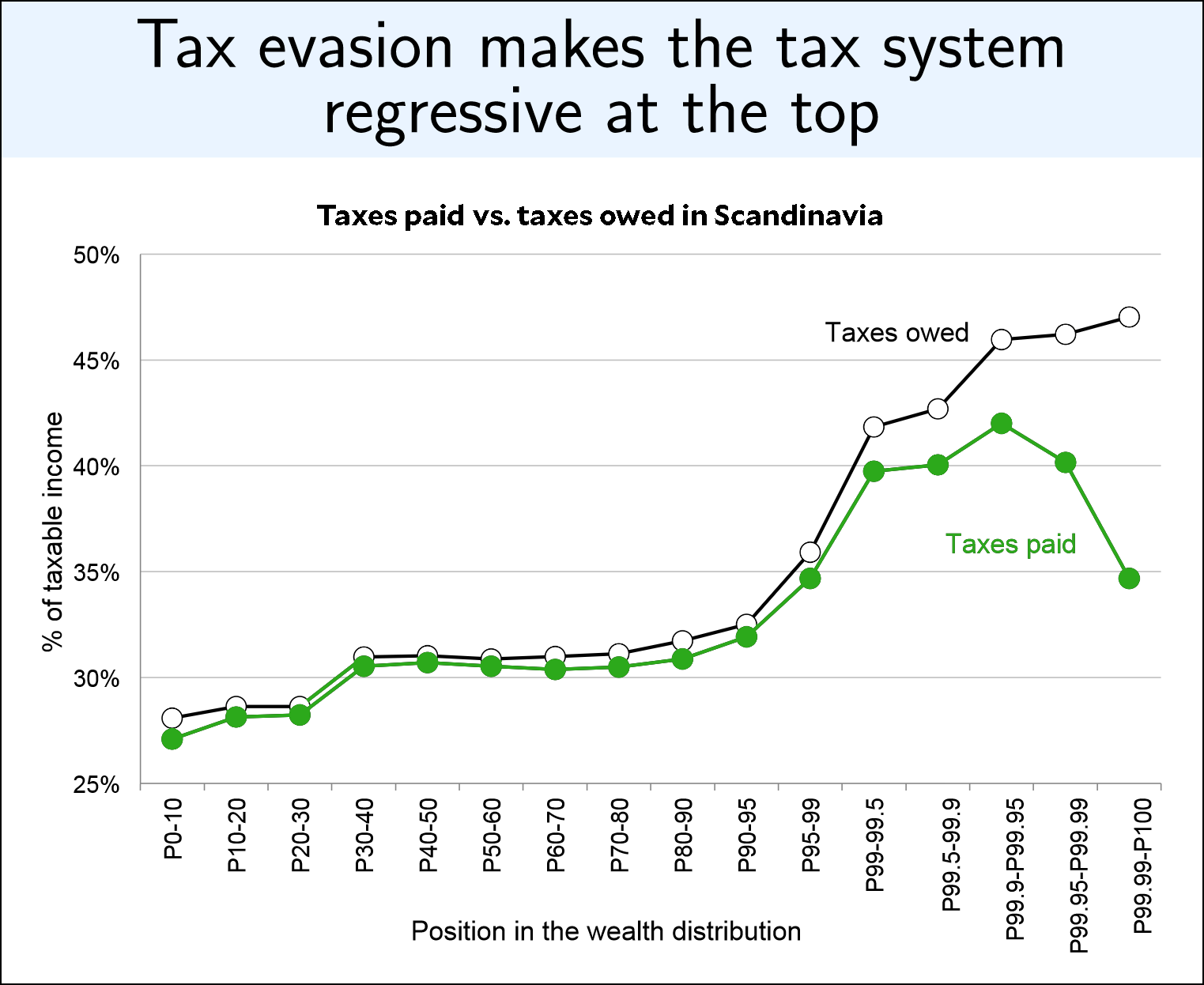Yesterday, as I was searching for some data on corporate use of tax havens, I clicked on the wrong link at Gabriel Zucman’s site. What I got instead was a slide presentation about the personal use of tax evasion among rich Scandinavians. Here’s one chart from the presentation:

If you look solely at tax evasion caught by audits (red dots), the rich have a higher rate of tax evasion than the poor, but not by a huge amount. However, it you include the use of offshore tax havens (blue dots), it turns out that the super rich avoid a lot of taxes. Here’s the result:

At the very tippy top, tax payments actually become regressive. The super-duper rich pay lower rates than the merely super-rich.
Now, maybe you don’t care about this. It’s Scandinavia, after all. And if the top 0.01 percent has declared war on the top 1 percent, maybe we should just get out the popcorn and watch the show.
But it’s a good bet that Americans use tax havens just as much as Scandinavians, and there’s increasing evidence about the power and influence that the super-duper rich exercise over politics. This is especially true in the post-Citizens United era. The Koch brothers are already famous for their spending, and the Mercers are now in the spotlight too. Tom Steyer is spending his money running ads urging the impeachment of President Trump. More and more billionaires are willing to fund their favored candidates almost without limit. That’s how we end up with this:
.@RepChrisCollins (R-NY) on tax reform: “My donors are basically saying, ‘Get it done or don’t ever call me again.'”
— Cristina Marcos (@cimarcos) November 7, 2017
For more on this, check out the New York Times today, which has a lengthy piece about how the Paradise Papers reveal exactly how the ultra-rich use tax havens to avoid paying taxes. It’s bracing stuff.

















